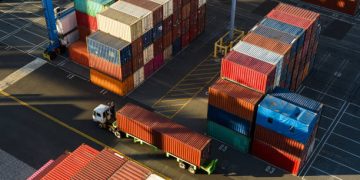China’s export sector continues to expand despite elevated US tariffs, pushing the country toward a potential record $1.2 trillion trade surplus this year.
With US market access limited, Chinese manufacturers are diversifying globally. Exports to India hit an all-time high in August, shipments to Africa are tracking for an annual record, and sales to Southeast Asia have surpassed their pandemic-era peak.
This surge is drawing mixed reactions worldwide. Some governments are concerned about the impact on local industries, while others are cautious in responding, balancing domestic protection with their economic ties to China. Mexico has already proposed tariffs of up to 50% on products such as cars and steel. Meanwhile, India has received dozens of applications for anti-dumping investigations, and Indonesia’s trade minister pledged closer monitoring after concerns over ultra-cheap exports went viral online.
Elsewhere, countries are treading carefully. South Africa is prioritizing investment over tariffs on Chinese cars, Chile and Ecuador have introduced selective fees on imports, and Brazil has opened tariff-free opportunities for Chinese automakers to build locally even while warning of stronger measures.
Analysts note that many economies remain reluctant to escalate trade disputes while engaged in negotiations with the US. Some governments view tariffs as bargaining tools to offer in broader talks, while others fear disruptions to the global trading system.
Despite strong overseas demand, Chinese manufacturers face challenges at home. Industrial profits fell 1.7% in the first seven months of the year, with firms cutting prices to clear excess capacity. Economists warn that the trend is contributing to persistent deflation and complicating China’s goal of boosting domestic consumption.
At the same time, Chinese exporters are benefiting from currency movements. The yuan has weakened against major currencies, improving competitiveness abroad. This, combined with shifting supply chains — such as Apple suppliers moving some iPhone production to India while still relying on Chinese components — has kept China central to global manufacturing flows.
Electric vehicle exports also remain strong, with over $19 billion worth shipped in the first seven months of the year. Europe continues to be a major market despite recent tariff actions.
Analysts suggest that China’s ability to redirect goods to other regions has helped offset reduced US demand. Overlap in product categories with BRICS and other trading partners means that much of what no longer heads to the US can find alternative buyers.
“China has shown resilience by tapping new markets and maintaining its global share,” said Adam Wolfe of Absolute Strategy Research. “The outlook suggests exports will remain steady through the rest of the year.”
#GlobalTrade #ExportNews #SupplyChainUpdate #ChinaEconomy #MarketTrends

















